Making sense of all of your data from all of your projects can feel like trying to understand a foreign language. But, when we break it down into steps, it starts to make a lot more sense.
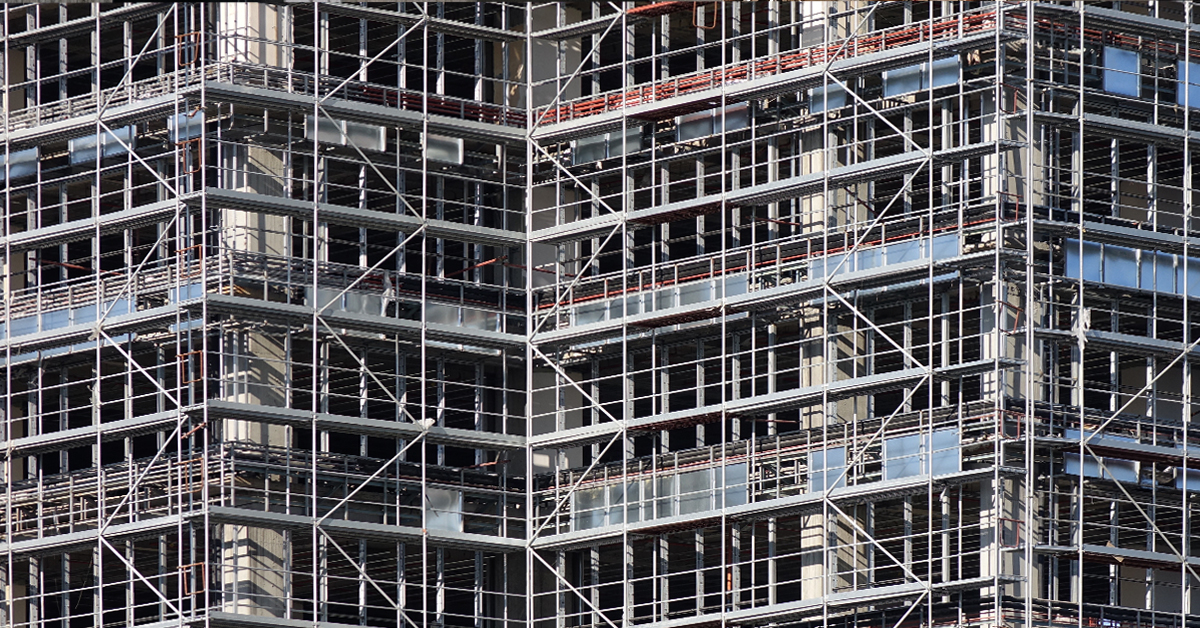
- News
Construction Delays: 20 Practical Tips to Avoid the 5 Common Causes
The Ultimate Guide to Reducing Schedule Delays
It’s become an inside joke in the industry: construction delays are so rampant that they’re almost expected. While some might chuckle to keep from shedding a tear, the reality is that “delay” is possibly the industry’s most dreaded word.
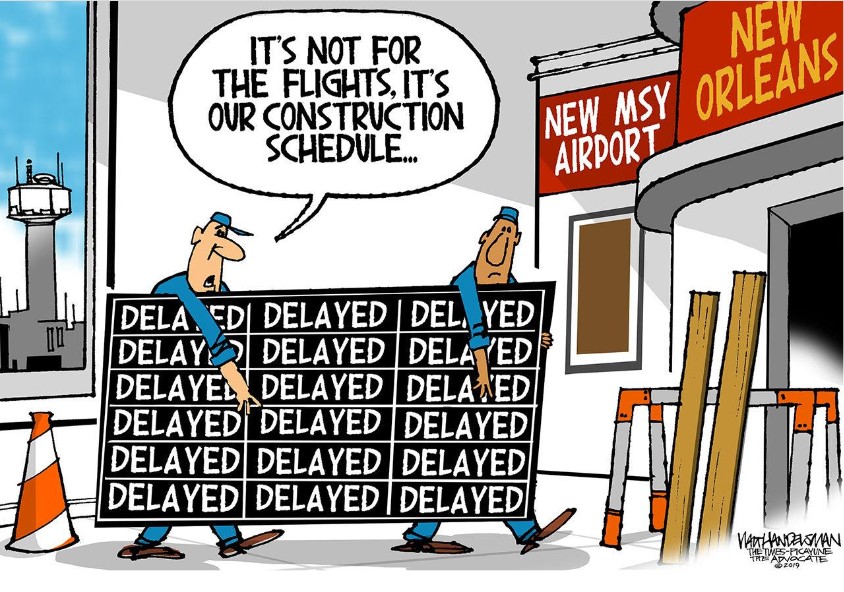 [Credit: Walt Handelsman: Delayed Arrival]
[Credit: Walt Handelsman: Delayed Arrival]
Mention construction delays to industry veterans, and they’ll regale you with tales of projects running weeks, months, or even year late.
A startling survey by the AGC highlights the gravity of the situation:
- 98% of projects experience cost overruns or delays.
- Only 25% of all construction projects finish within 10% of their initial deadline.
- 77% of mega-projects around the world lag by 40% or more.
Given the numerous elements and players in a construction project, it’s clear how even minor changes can disrupt a timeline. A single day’s delay can lead to massive costs, often paired with hefty fees or penalties. Companies unable to streamline their schedules risk dwindling profit margins.
What’s more concerning is that while these delays plague the industry, they offer no benefits. Delays create an environment ripe for disputes and claims that drain resources and foster conflict, eroding crucial business relationships vital for future growth. While some delays, like those due to weather, are inevitable, most are preventable. Reducing or eliminating them can save significant costs, especially overruns.
Luckily, embracing project controls can substantially improve a project’s chance of timely completion. Confronting scheduling issues head-on is one of the best approaches. This article delves into he four major categories of construction delays, their common causes, and introduces innovative project control tools to help contractors sidestep these pitfalls.
The 4 Categories of Construction Delays
At its core, a delay in construction signifies a deviation from the planned timeline. It refers to tasks happening later than anticipated, planned activities being postponed, or a general lack of timely action. Since every construction project is guided by a schedule, any delay in a specific task can ripple through and affect overall project completion or other key deadlines, like milestones.
Before diving deep into delay analysis, it’s pivotal to categorize these delays. This helps builders, especially those handling construction oversight, managing project controls, or supervising the construction timeline, to strategize more effectively. Below, we’ll explore the four main categories of delays and suggest “controls” that can help mitigate their impact.
Critical vs. Non-Critical Delays
When examining delays it’s crucial to differentiate between delays that:
- Influence the overall progress of a project, like its end date or significant milestones, and
- Are absolutely vital for project completion.
Notably, many delays might seem significant but don’t actually alter the final project timeline or its critical path. A robust understanding of which delays will and won’t affect project completion is essential for effective project management.
- Critical Delays: These directly impact the project’s completion. Originating from the Critical Path Method (CPM) of scheduling, they represent delays in activities that, if postponed, will shift the project’s end date.
- Non-Critical Delays: These are delays that, while may affect certain tasks, don’t extend the project’s final completion date.
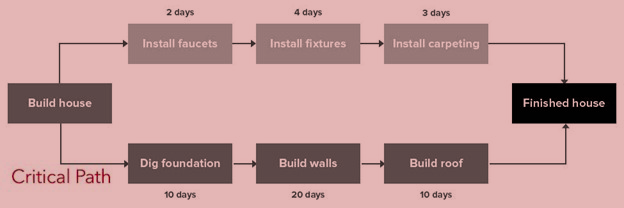
For instance, a delay in laying a house’s foundation would undeniably result in a critical path delay. In contrast, a setback in carpet installation might not have such a direct impact on the project’s end date. It’s noteworthy to mention that every project encounters “critical delays” irrespective of whether the CPM scheduling method shaped its timeline. Each schedule inherently has a “critical path.”
Factors determining which activities influence the project completion include:
- The nature of the project.
- The contractor’s planning and scheduling, especially its critical path.
- Contractual sequence and phrasing stipulations.
- Practical construction considerations related to the project.
When conducting a delay analysis, always incorporate “contemporaneous information” like daily reports, current schedules, and other pertinent project data.
Understanding Excusable and Non-Excusable Delays
Delays fall into two main categories:
- Excusable Delays: These arise from unforeseen events beyond the responsibility of the contractor or subcontractor. Examples of excusable delays are:
- General labor strikes
- Natural events like fires, floods, and other “Acts of God”
- Owner-initiated changes
- Errors in plans and specifications
- Unexpected site conditions
- Severe weather disturbances
- Interventions from external agencies (e.g., EPA)
- Inaction from governmental bodies (e.g., building inspection delays)
- Non-Excusable Delays: These result from events that are predictable or considered to be under the contractor’s control. Common non-excusable delays include:
- Delays from subcontractors or suppliers
- Poor workmanship by the contractor or subcontractor
- Project-specific labor strikes due to negotiation failures or unfair practices
Distinguishing between these two types of delays helps manage project timelines effectively and addresses accountability.
Compensable vs. Non-Compensable Delays Explained
Delays in construction can be either compensable or non-compensable:
- Compensable Delays: These are specific types of excusable delays where the contractor not only gets a time extension but is also entitled to additional compensation. Not all excusable delays are compensable.
- Non-Compensable Delays: Even if a delay is excusable, it doesn’t always mean the contractor will receive added compensation. Non-excusable delays don’t qualify for additional time or money.
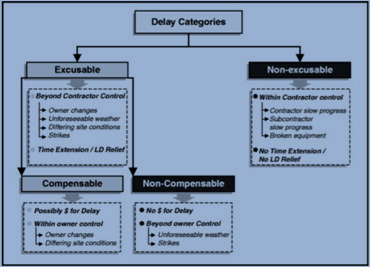
The distinction between these delays often rests in the contract’s details. For instance, federal contracts typically define events like fires, floods, and acts of God as excusable but non-compensable delays.
A prevalent contract clause, “no-damage-for-delay, limits liability during excusable delays. Such clauses typically grant time extensions for excusable delays, but without any additional financial compensation. The sole remedy for these delays is the time extension.
“If the Contractor is delayed in the progress of the work by an act or neglect of the Owner or Engineer… then the Contract Time may be extended by Change Order for such reasonable time as the Engineer determines. It is agreed that no claim shall be made or allowed against the Owner or Engineer for any damages, loss or expense which may arise out of any delay caused by the above-referenced acts or occurrences, other than claims for the appropriate extension of time.”
Concurrent vs. Non-Concurrent Delays
Concurrent Delays refer to separate delays on the critical path that happen simultaneously. It’s not merely about delays happening at the same time; it’s about distinct critical paths being delayed concurrently. These should not be confused with situations where a critical path can have concurrent causes for the same delays.
While there is much debate about what a concurrent delay is, we can generally define a “true concurrency” as events that begin and end simultaneously.

In the example above, all of the following can be said to be true. Each delay event caused a delay. Each delay event is on the critical path. Both the employer and contractors’ cause of delay overlap.
Understanding concurrent delays is vital for pinpointing the project’s primary delay source and attributing responsibility for the associated damages. Both project owners and contractors often use concurrent delays to argue for time extensions without additional costs or to dispute penalties for their delays.
Top 5 Causes of Construction Delays
According to a recent meta-analysis of all studies conducted in the last 15 years to determine construction delay causes, the top five of 36 known causes were:
- Poor duration scheduling and planning of resources
- Contractor’s financial difficulties
- Delay in approval of completed work
- Slow delivery of materials
- Poor site organization and coordination between various parties
1. Poor Duration Scheduling and Planning of Resources
Despite having a seemingly robust construction schedule, if you’ve overlooked the real-time required for task completion, delays are almost inevitable. Inaccurate task time estimates (i.e., poor duration scheduling) are a leading cause of construction delays, with 25% of projects failing due to this oversight.
So, why devise a schedule if your team isn’t in the loop? An uninformed crew unaware of schedule updates or project progress can’t be expected to set milestones. Over-ambitious scheduling might seem like a cost-saving measure initially, but it often results in lost profits. In some cases, delays can even cause contractors to suffer losses.
The heart of the issue? Unrealistic expectations. Those in charge of scheduling must have a profound understanding of every project detail. This includes knowing the logical sequence of tasks, the intricacies of each activity, and the associated resources. For instance, if laying a foundation genuinely requires 10 days but is squeezed into 9, it can delay the entire project.
To avoid such pitfalls:
- Factor in additional time (float), especially for intricate tasks, to provide a buffer against unforeseen complications.
- Ensure your crew is well-informed about the project’s timeline, major milestones, and deadlines.
Lastly, leverage construction schedule analytics software. Such tools analyze your project schedule, offering insights to preemptively address potential problems and rectify delays.
Quick Tips:
- Use construction schedule analytics software to optimize scheduling, cut costs, and mitigate risk.
- Schedule tasks with achievable deadlines.
- Keep employees and crews informed about key deadlines and milestones.
- Incorporate buffer time (float) in tasks to account for unforeseen delays.
2. Contractor’s Financial Difficulties
While poor cost estimates that negatively impact a project’s final budget do cause construction delays, there are four specific financial factors identified in the meta-analysis of construction delay causes that are specifically implicated as a top cause of construction schedule delays:
- Late payment
- Poor cash flow management
- Insufficient financial resources
- Financial market instability
Of all these issues involving contractors’ financial difficulties, late payment and poor cash flow management are the primary causes, and late payments actually produce poor cash flow management. According to a recent paper on the effects of delayed payments, late payments involve all parties, including clients, consultants, and contractors, and is a global problem: “The impact of delayed payment is a delay in project progress which affects the schedule of work and leads to cost overrun and extension of time.”
So what can a GC do to avoid late payments? Obviously, ensuring all subs submit detailed and accurate cost estimates and that your project’s final budget is accurate is essential for preventing construction delays, but contractors can eliminate financial difficulties that lead to delays simply by reducing errors when submitting claims and changing payment terms from 90 to 30 days to ensure they have the cash to run basic operations during the entire lifecycle of a project. According to one study, contractors are 6 times more likely to experience a construction delay when their payment terms are 90 days or more.
Quick Tips:
- Ensure your funding is in place before the project starts.
- Develop an accurate budget and require to submit detailed and accurate estimates.
- Reduce errors when submitting claims.
- Limit payment terms from 90 to 30 days to ensure you have cash flow throughout the duration of the project.
3. Delay in Approval of Completed Work
One of the most basic aspects of CPM schedule methodology (and project management in general) is the notion that some tasks cannot be started until other tasks are completed. Such tasks are called “dependencies” in project management jargon. But being completed isn’t enough. Work on a job not only has to be completed but also “approved.” In many cases, if work isn’t approved even though it’s completed, the project comes to a standstill, causing delays that result in disruption of the critical path, which in turn, causes the entire project to be delayed.
It’s, therefore, critical for those managing project controls to keep the project on schedule by building in critical checkpoints for approval and then carefully monitoring the schedule to ensure that approvals for all work are completed in a timely manner. When approvals are completed on time, the project experiences fewer delays. In some cases, simply properly managing work approvals can help get a job completed on time or even early.
With the real-time updates and powerful functionality that modern, cloud-based construction productivity software provides, a project manager or scheduler gets an alert on his dashboard regarding a new change order. He can then approve the change order from his device. Likewise, the back office is able to see changes to the schedule updated in real-time. What’s more, SmartPM construction schedule analytics can help you track and monitor these critical approval tasks to ensure the timely completion of your project and reduce or eliminate construction delays.
Quick Tips:
- Build-in regular approval checkpoints for work into the project
- Ensure approval for the change order is communicated quickly
- Resolve disputes and claims that lead to final approval delays
- Use cloud-based productivity software like PlanGrid with schedule analytics like SmartPM to know what changes are impacting the schedule and what approval bottlenecks are bringing the project to a halt.
4. Slow Delivery of Materials
Though supply chain disruptions were minimal during the height of the shut-down orders, some limited breaks in the supply chain are now being reported. As projects that were delayed are now being reopened, that trend may continue to rise, making it difficult to get the materials you need when suppliers are unable to meet demand due to shutdowns and limited staff as more people are being quarantined. To avoid disruptions when these issues inevitably come to light, it’s important to start exploring alternative vendors and materials so that you can keep your crew moving and your projects rolling forward.
If you know that your business is going to need a certain amount of drywall every month, why not go ahead and make a bulk purchase of those materials so that you don’t need to run to the store or supply house whenever you start to run short? This not only helps you limit potential exposures, but it also allows you to save money by purchasing in bulk, at which point many suppliers will offer you a significant discount to purchase this way, as it also saves them time and money compared to people coming in to make purchases one project at a time. To limit exposure between crews, consider having materials delivered to the job site, or have separate staging or storage areas for each crew to keep them apart whenever possible.
Quick Tips:
- Explore replacement vendors and materials to keep the project on track when supply chain issues surface
- Make bulk purchases for commonly used materials and supplies
- Communicate with owners/clients about supply issues and revise the schedule when necessary materials will be significantly delayed
- Tap into new cloud-based delivery construction delivery services like RenoRun
5. Poor Site Organization and Coordination between Various Parties
Every successful construction project has one common element: constant communication. We can’t understate how important communication is to eliminating or drastically reducing construction delays (and disputes).
Site organization and coordination is a detailed and meticulous process conceived well before a project begins and ensures not only the safety of the construction site but also the productivity of a project. Beyond site investigation, before a project starts, materials delivery, and records management, good site organization and coordination are dependent upon communication and constant information flow. Information needs to flow freely not only between the team on the job site but also between project managers and clients. Constant communication and interaction between all parties won’t eliminate construction delays but will drastically reduce them.
When a problem arises that could delay the schedule, the most important thing is that this information is communicated quickly and clearly to the right parties so the risk of the delay is mitigated and the contractor can take swift action to correct the problem and get the schedule back on track before it’s too late.
Establishing a communication chain of command early on is essential to improve productivity. Who is responsible for communicating with whom and when are they communicating? Realize that the medium is the message. Select the right communication tools based on information priority. Don’t send an email to communicate a critical delay when a phone call would be faster and more decisive. Invest not only in construction communication and collaboration technology but also in construction management and schedule analytics technology to quickly provide alerts, understand how it’s impacting the project, and troubleshoot to get a solution fast.
Quick Tips:
- Establish a clear communication chain of command so the right information is communicated to the right people.
- Select the right communication medium for the message.
- Explore cloud-based construction collaboration software, like Procore, to ensure communication is quick and clear about the project as a whole, particularly problems that put the construction schedule’s critical path at risk.
Putting It All Together
As we’ve discussed, most construction projects suffer from construction delays that not only cost construction firms but also place entire projects at risk of failure. Although schedule delays feel like an inevitable fixture of construction projects, they don’t have to be.
Construction schedulers and those managing project controls can take action to reduce or even eliminate delays by learning about the four categories of delays and some important steps they can take to control the risks in projects that result in delays.
Contractors can take specific action to avoid these five common causes of delays:
- Poor duration scheduling and planning of resources
- Contractor financial difficulties
- Delay in approval of completed work
- Slow delivery of materials
- Poor site organization and coordination between various parties
By improving planning, increasing communication, and leveraging sophisticated technologies like cloud-based schedule analytics software, construction firms can avoid these pitfalls easily.
Want to jump right in and get your feet wet in construction schedule analytics? Schedule a free demo to see how SmartPM will help eliminate your schedule delays, save money, and reduce your stress.
RELATED STORIES

Making Construction Data Analytics Easier to Understand
Making sense of all of your data from all of your projects can feel like trying to understand a foreign language. But, when we break it down into steps, it starts to make a lot more sense.
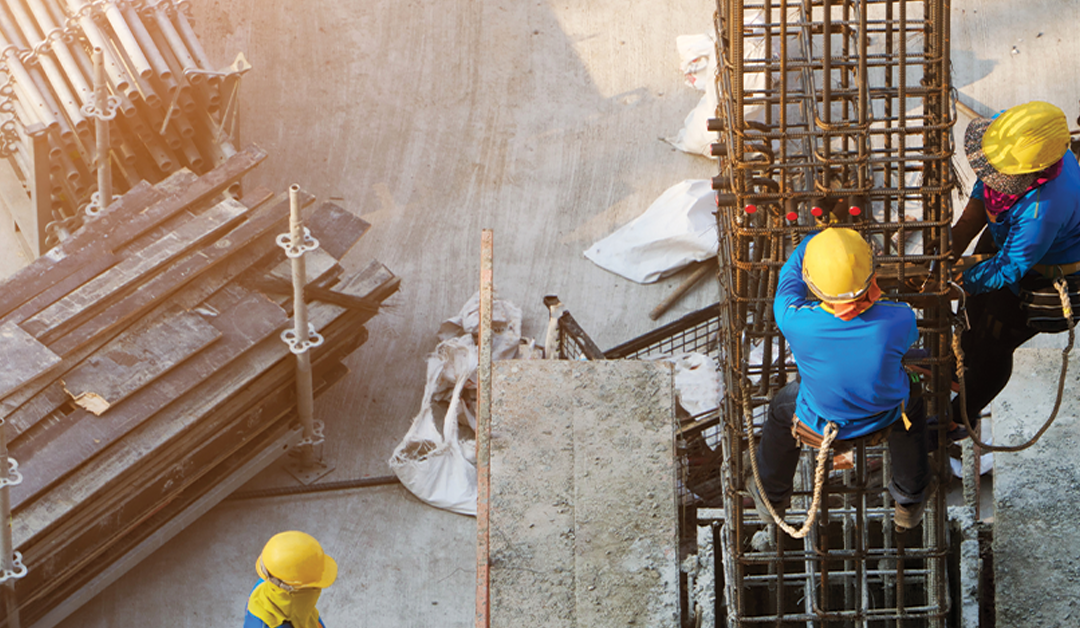
Overcoming Confirmation Bias in Construction Project Management
Confirmation bias can be particularly problematic in project and schedule management, where decisions must be based on accurate and comprehensive information.

Top Construction Scheduling Software in 2023
SmartPM’s recognition as a top construction scheduling software in 2023 attests to the immense value in automated project controls.
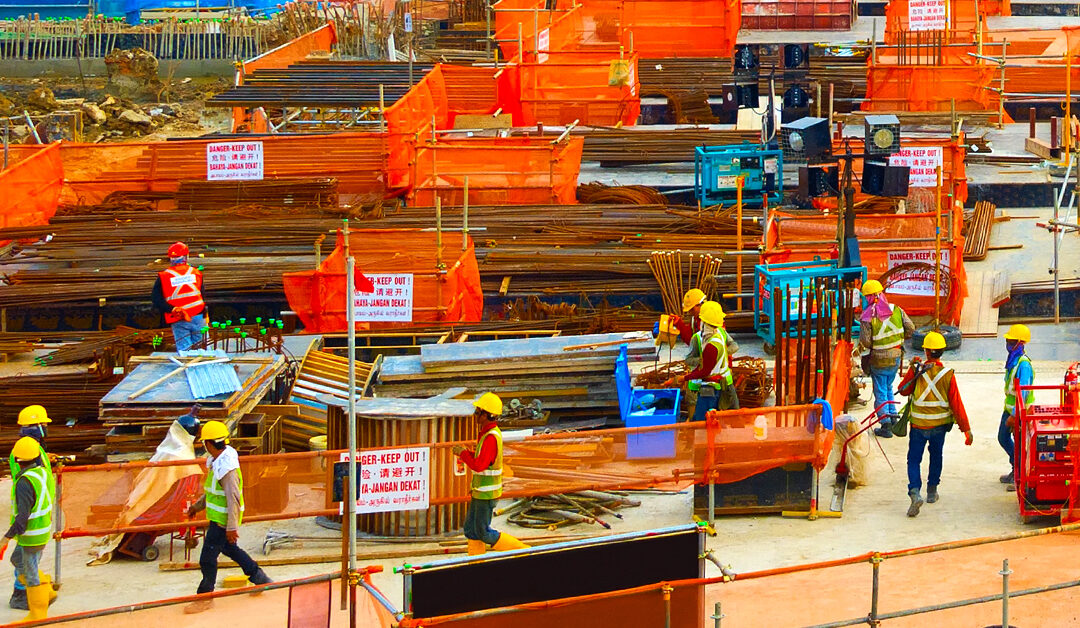
Putting the ‘Smart’ in Project Management with Project Controls
Project controls are not just a subset of project management; they are its backbone, focusing on meticulous monitoring and analysis.

